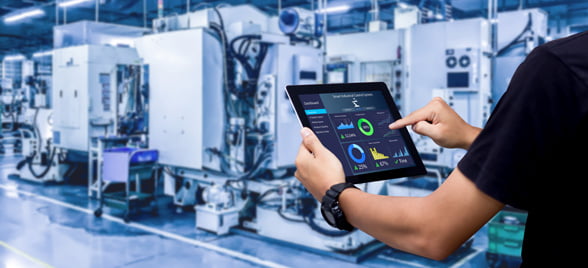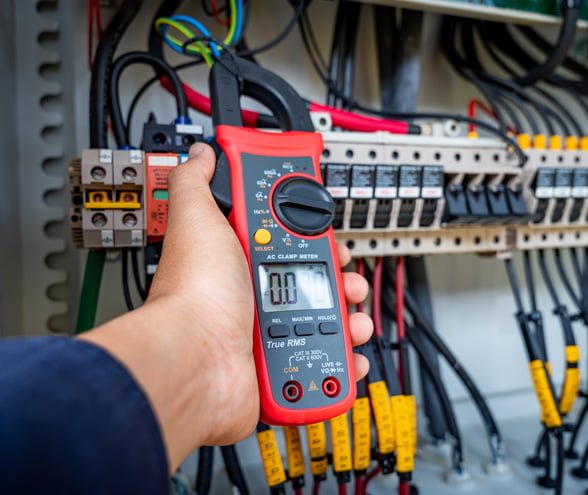Commercial energy management systems (EMS) are computer-based systems that are designed to monitor, control, and optimize energy use within a building or facility. An EMS typically consists of hardware, software, and communication networks that work together to manage and reduce energy consumption.
The primary goal of an EMS is to improve energy efficiency and reduce energy costs. This is accomplished by monitoring and analyzing energy usage patterns and identifying opportunities to optimize energy use. An energy management system may use a variety of techniques to achieve this goal, including:
Occupancy recognition and programming are the means to monitor indoor environments. You will not have foregone comfort while doing it.
We all are trying to reduce emissions and greenhouse gases to protect the environment. An energy management system may be the way to go. It can put you in control of the energy you use.


How Energy Management Systems Work
- Real-time monitoring: An EMS can monitor energy consumption in real-time, providing up-to-date information on energy use and identifying areas where energy savings can be achieved.
- Automated control: An EMS can control various systems within a building, such as lighting, HVAC systems, and equipment, to ensure optimal energy use and reduce waste.
- Energy analytics: An EMS can analyze energy usage patterns to identify trends and opportunities for improvement. This data can be used to develop energy-saving strategies and track progress over time.
- Demand response: An EMS can respond to changes in energy demand by adjusting energy use in real-time, helping to avoid costly peak demand charges and reducing strain on the energy grid.
EMS are used in a wide range of settings, including commercial buildings, industrial facilities, and government buildings. By optimizing energy use and reducing energy waste, EMS can help reduce greenhouse gas emissions and contribute to a more sustainable and resilient energy future.
Process of Installing a Building Energy Management System
A standard building energy management system should have the following modules.
- At the very least one central station
- Connection to the various controllers. These controllers are able to operate separately as well, or you can control them from the central station.
What is the general idea behind using a building energy management system? The general idea is that it will save you money. It will also help protect the environment.
The primary purpose of building energy management systems is:
- To deliver a pleasurable and healthy indoor climate
- To ensure the safety owner and the worker of the building
- Confirming the economic functioning of the building, not just energy but also worker


Things to consider before installing a Commercial Energy Management System
The first thing you should consider is the needs of the building. Some buildings will require more or less energy than other buildings.
You should make sure you consider the following:
- Size and scope – 1 room or 4
- Location
- Number of buildings
- Use of the building office or warehouse
- What is the upfront cost if any?
- Are there tax incentives for the system you are installing?
- Will your staff be able to pick it up easily or be able to use it?
- Is there a warranty on it?
All these things make a difference in what you choose to use. If you have several employees you need to make sure they can use the software, or it will do you no good.
Tax Benefits of Commercial Energy Management Systems
There are several benefits to an energy management system. They include:
- Reduces cost of operation and power usage and expense
- Lowers carbon footprint which helps humanity and your corporate image
- Reduces energy consumption up to 40%
- Administer your own Micro-Grid
- Helps to be ESOS compliant
- Assists to lower carbon/GHG emissions
- Improves building efficiency-HVAC-ELECTRICAL-WATER
- Early discovery of power or fuel issues, less downtime
- Identifies system maintenance problems early and less downtime
- HUGE TAX ADVANTAGES WITH THE RECENT INFLATION REDUCTION ACT
The system can save you money on heating, cooling, and other expenses. It can also save you money from expensive downtime by catching maintenance issues before they lead to break downs.

Modern Thermal Design's Building Energy Management Systems
Modern Thermal Designs offers CO2 Carbon tracking and many other benefits.
Buildings cause over 40% of energy-related CO2 emissions yearly. Our commerical energy management system can reduce that in your facility now. It will screen, control, gauge, and adjust energy consumption needs according to the building. The system connects other systems of the building to one central platform. The platform allows for monitoring and managing the buildings’ energy consumption. All this provides the benefits of:
- Lowers energy consumption
- Reduce working costs
- You can manage your Micro-Grid
- Enables you to be ESOS compliant
- Assists in lowering carbon/GHG emissions
- Improves building efficiency-HVAC-ELECTRICAL-WATER
- Uncovering power or fuel problems early
- Identifies system maintenance problems early

